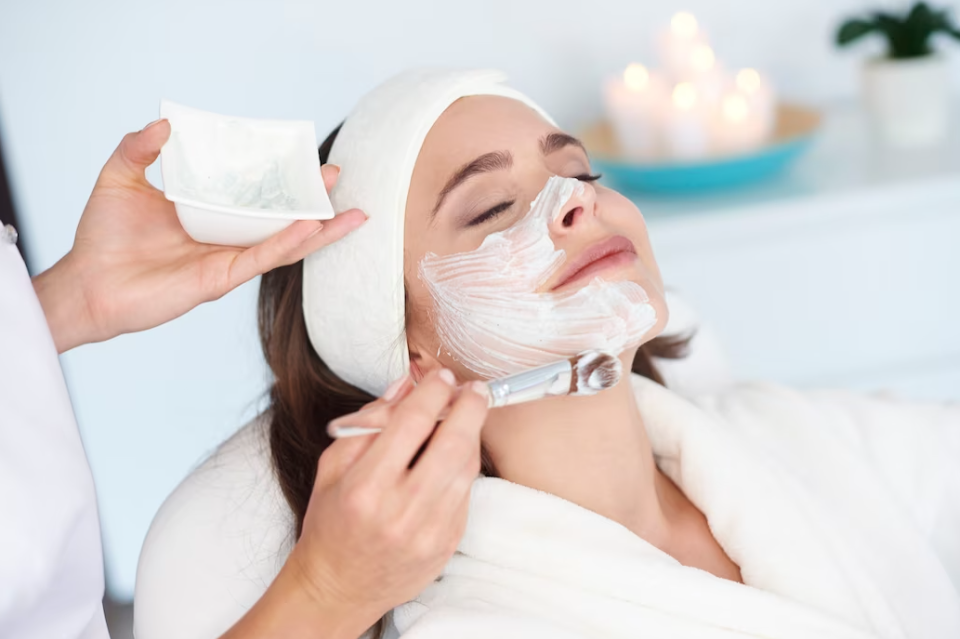SCARS TREATMENT
What are the types of scar treatment?
Scars can result from injuries, surgeries, acne, or various skin conditions. While scars are a natural part of the healing process, they can sometimes be aesthetically displeasing or cause discomfort. Fortunately, there are various scar treatment options available, each with its own benefits. Here are some common scar treatment methods and their advantages:
1. Topical Scar Creams and Gels:
- Benefits: Topical treatments can help reduce the appearance of scars, especially when used on newer scars. They often contain ingredients like silicone, vitamin E, or hyaluronic acid that can hydrate the skin and improve its texture.
- Limitations: Topical treatments may be less effective on older scars or scars with significant texture changes.
2. Silicone Gel Sheets or Patches:
- Benefits: Silicone sheets or patches are applied directly to the scar and can help flatten and soften raised scars. They are effective for both old and new scars.
- Limitations: Consistent and long-term use is often required for noticeable results.
3. Laser Therapy:
- Benefits: Laser treatments can target specific types of scars, such as keloids or hypertrophic scars, and promote collagen remodeling. They can also improve skin texture and reduce redness.
- Limitations: Multiple sessions may be needed, and some downtime for recovery is typically required.
4. Microdermabrasion:
- Benefits: Microdermabrasion is a non-invasive exfoliation technique that can help improve the texture of the skin and reduce the appearance of scars.
- Limitations: It may not be suitable for all types of scars, and multiple sessions may be needed.
5. Chemical Peels:
- Benefits: Chemical peels involve the application of a chemical solution to the skin, which exfoliates the top layer and can improve the appearance of certain types of scars.
- Limitations: Not all scars respond well to chemical peels, and the depth of the peel needs to be carefully chosen.
6. Corticosteroid Injections:
- Benefits: Corticosteroid injections can help reduce inflammation and flatten keloid or hypertrophic scars.
- Limitations: Multiple injections may be needed, and they may not be suitable for all types of scars.
7. Surgical Scar Revision:
- Benefits: Surgical scar revision involves removing the existing scar tissue and creating a new, more aesthetically pleasing scar. It’s effective for improving the appearance of certain scars.
- Limitations: Surgical procedures carry some risks, and there will be a new scar.
8. Microneedling:
- Benefits: Microneedling involves the use of tiny needles to create controlled micro-injuries in the skin, stimulating collagen production and improving the appearance of scars.
- Limitations: Multiple sessions may be needed, and there may be some downtime.
9. Platelet-Rich Plasma (PRP) Therapy:
- Benefits: PRP therapy uses the patient’s own blood to stimulate tissue repair and collagen production, which can improve the texture and appearance of scars.
- Limitations: Multiple sessions may be required, and results may vary.
The choice of scar treatment depends on the type of scar, its location, and your individual preferences. Consult with a dermatologist or plastic surgeon to determine the most suitable treatment for your specific scar. In some cases, a combination of treatments may be recommended for the best results.
- Stimulated Collagen Production: Microneedling involves the use of fine needles to create controlled micro-injuries in the skin. This process stimulates the production of collagen and elastin, which are essential for healthy, firm, and smooth skin. Increased collagen production can help fill in depressed or atrophic scars, making them less noticeable.
- Improved Texture: Microneedling can help improve the texture of the skin by breaking up scar tissue and encouraging the growth of new, healthy skin cells. This can lead to smoother and more even skin.
- Minimized Scarring: For hypertrophic or raised scars, microneedling can help reduce their height and make them less prominent.
- Enhanced Product Absorption: Microneedling creates tiny channels in the skin, allowing topical products like serums or growth factors to penetrate deeper and be more effective in promoting skin healing and scar reduction.
- Minimally Invasive: It is a minimally invasive procedure with minimal downtime. Most people can resume their normal activities within a few days after treatment.
- Targeted Delivery: Mesotherapy involves the injection of a customized mixture of vitamins, minerals, amino acids, and other active ingredients directly into the skin. This allows for precise and targeted delivery of nutrients to the scar tissue, promoting healing and collagen production.
- Improved Scar Appearance: Mesotherapy can help reduce the appearance of scars by stimulating tissue repair and regeneration. The nutrients injected can nourish and rejuvenate the skin in the treated area.
- Customized Treatment: The mesotherapy solution can be tailored to the specific needs of the patient, depending on the type and severity of the scar. This customization ensures that the treatment addresses the scar effectively.
- Enhanced Blood Flow: The microinjections from mesotherapy can increase blood flow to the treated area, which is essential for skin healing and scar reduction.
- Optimized Results: The micro-injuries created by microneedling enhance the absorption and effectiveness of the mesotherapy solution, maximizing the treatment’s benefits.
- Comprehensive Scar Treatment: The combination of these treatments can address both the physical changes in scar tissue and provide the necessary nutrients for scar healing and remodeling.
- Versatility: This approach is versatile and can be customized to treat various types of scars, including acne scars, surgical scars, and traumatic scars.
- Natural-Looking Results: The gradual improvement in skin texture and appearance achieved through these treatments typically results in natural-looking and long-lasting results.
- Stimulated Collagen Production: Microneedling involves creating controlled micro-injuries in the skin using fine needles. This process triggers the body’s natural wound healing response, leading to increased collagen and elastin production. This can help fill in atrophic or depressed scars, making them less noticeable.
- Improved Skin Texture: Microneedling can break up the fibrous tissue of scars, promoting the growth of new, healthy skin cells. This can lead to smoother and more even skin texture.
- Minimized Scarring: For hypertrophic or raised scars, microneedling can help reduce their height and make them less prominent.
- Enhanced Product Absorption: Microneedling creates tiny channels in the skin, allowing topical products, such as stem cell serums, to penetrate deeper into the skin. This enhances the effectiveness of stem cell therapy.
- Minimally Invasive: Microneedling is a minimally invasive procedure with minimal downtime. Most people can resume their regular activities within a few days.
- Regenerative Potential: Stem cells have the unique ability to differentiate into various cell types, including skin cells. When applied to scar tissue, stem cells can promote the regeneration of healthy skin cells and tissue, reducing the appearance of scars.
- Enhanced Healing: Stem cells release growth factors and cytokines that stimulate the body’s natural healing processes. This can accelerate tissue repair and collagen production, aiding in scar reduction.
- Anti-Inflammatory Effects: Stem cells possess anti-inflammatory properties that can help reduce redness, itching, and discomfort associated with scars.
- Improved Skin Quality: Stem cell therapy can improve the overall quality of the skin, making it look more youthful and rejuvenated.
- Optimized Scar Healing: Microneedling creates micro-channels that allow stem cells to penetrate deep into the skin, enhancing their regenerative effects and promoting more efficient scar healing.
- Comprehensive Scar Improvement: This combination addresses both the physical changes in scar tissue and provides the regenerative support needed for optimal scar remodeling.
- Natural-Looking Results: The gradual improvement in skin texture and appearance achieved through these treatments typically results in natural-looking and long-lasting results.
- Versatility: This approach is versatile and can be customized to treat various types of scars, including acne scars, surgical scars, and traumatic scars.
- Improvement of Depressed Scars: Dermal subcision is particularly effective at addressing rolling or atrophic scars. These are scars with a depressed appearance and uneven texture caused by the loss of underlying tissue support.
- Enhanced Skin Smoothness: The main goal of dermal subcision is to break up the fibrous bands or connective tissue that tether the scar to the underlying tissue. By releasing these bands, the scar is lifted, and the skin becomes smoother and more even in texture.
- Stimulated Collagen Production: Dermal subcision stimulates the production of collagen, a crucial protein that supports the skin’s structure and elasticity. Over time, the increased collagen production can further improve the overall texture and appearance of the treated area, making it look more youthful and rejuvenated.
- Minimally Invasive: Dermal subcision is a minimally invasive procedure that requires only local anesthesia. It is less aggressive and involves less downtime compared to more invasive surgical options, making it a preferred choice for those who want to improve scar appearance without significant disruption to their daily activities.
- Suitable for Various Skin Types: Dermal subcision is generally safe and suitable for a wide range of skin types and tones, making it accessible to a diverse group of individuals seeking scar improvement.
- Customized Treatment: The procedure can be tailored to the specific needs of the patient. Multiple sessions may be recommended, depending on the type and severity of the scars, allowing for a gradual improvement in scar appearance.
- Versatile: Dermal subcision can be used to treat various types of depressed scars, including those caused by acne, surgery, or trauma.

Take a look at the result
Lorem Ipsum is simply dummy text of the printing and typesetting industry. Lorem Ipsum has been the industry’s standard dummy text ever since the 1500s, when an unknown printer took a galley of type and scrambled it to make a type specimen book. It has survived not only five centuries, but also the leap into electronic typesetting, remaining essentially unchanged. It was popularised in the 1960s with the release of Letraset sheets containing Lorem Ipsum passages, and more recently with desktop publishing software like Aldus PageMaker including versions of Lorem Ipsum.






